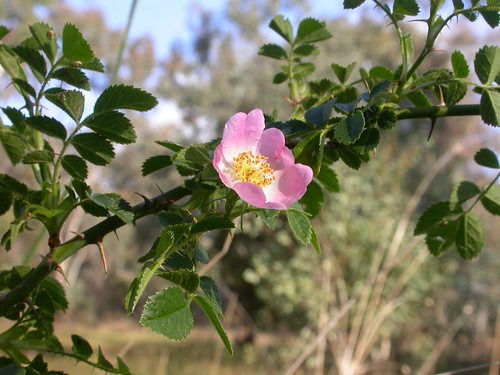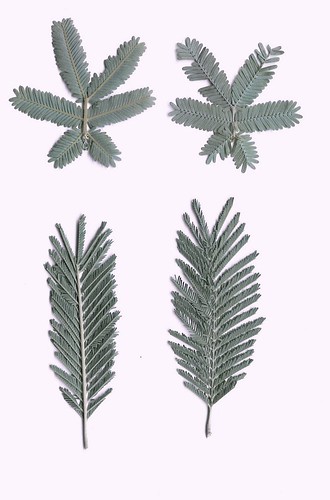When: Sunday, 19 February 2012, 9 am – 1 pm
Where: Meet at the nature park entrance at Mackenzie Street opposite Grayson Street, Hackett; click on map to view the meeting point.
Wear: Sun protection, sturdy shoes, long sleeves and pants.
What: Control of woody weeds along the creek line downhill of the Majura dams. We will use the cut-and-daub method to tackle Briar Rose, blackberry, and young Cootamundra wattles.
Enquiries: admin@majura.org or 6247 7515
We provide the tools and morning tea (tea coffee and cake around 11 am).
Novice weeders please come early for an introduction of the target weeds and the safe use of tools and herbicides. Bring your friends and help promote the event; click here to download a poster.

Sweet Briar, Rosa rubiginosa, a native plant of Europe and West Asia, is a major weed particularly of dry and hilly disturbed land. The seeds are spread by birds and foxes which eat the red fleshy fruits (rose hips). Briars were introduced to Australia as garden and hedge plants in the early 1800s (Photograph Waltraud Pix, 23.11.2011).
Cootamundra Wattle, Acacia baileyana, is an Australian species, which does not naturally occur in Canberra. It was introduced to the ACT as a garden plant. The highly invasive species is now widespread in Namadgi National Park and the suburban nature reserves of the ACT.
 How to tell-apart from look-a-likes. The compound blueish-grey-green leaves of a Cootamundra wattle (top in the left panel) resemble those of the local species Sliver wattle, Acacia dealbata, which native to the Mount Majura and Mount Ainslie nature reserves. The leaves of Cootamundra wattles have 3-4 pairs of leaflets arranged along the leaf stem, the lowest pair is shorter and embraces the branch to which the leaf is attached. The leaves of Silver wattles have 8-20 pairs of leaflets arranged along to the leaf stem and the lowest pair does not embrace the branch.
How to tell-apart from look-a-likes. The compound blueish-grey-green leaves of a Cootamundra wattle (top in the left panel) resemble those of the local species Sliver wattle, Acacia dealbata, which native to the Mount Majura and Mount Ainslie nature reserves. The leaves of Cootamundra wattles have 3-4 pairs of leaflets arranged along the leaf stem, the lowest pair is shorter and embraces the branch to which the leaf is attached. The leaves of Silver wattles have 8-20 pairs of leaflets arranged along to the leaf stem and the lowest pair does not embrace the branch.


